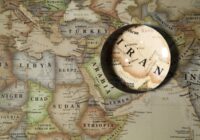Recent war games between China and Russia are a statement more about China’s commitment to its claims in the South China Sea and less about a rising partnership between Beijing and Moscow.
Elements of the Chinese and Russian navies just completed an eight-day joint exercise in the South China Sea. Part of the ongoing Joint Sea 2016 training operation between the two nations, the most recent exercise featured anti-submarine components and amphibious landing elements, among others. Global reactions to the exercise have varied, but as with any joint project between China and Russia there have been ample speculation that the exercise signals a growing partnership between Beijing and Moscow. Joint Sea 2016 does have a geopolitical intent, but the message is more about the waters of the South China Sea than an emerging Eurasian alliance.
A Tale of Two Leaders
There is no mistaking that ties between Beijing and Moscow have warmed in recent years. For much of the latter half of the 20th century, relations between China and Russia were stormy, with the two countries even engaging in a seven-month border conflict in 1969. The warming of relations is in no small part due to the strong ties between the two countries’ leaders: Xi Jinping and Vladimir Putin.
President Xi came to power with a deep understanding of Russia and the states of the former Soviet Union, as he was both a student of Eurasia and spent time in Russia as he was rising through the ranks of the Chinese Communist Party (CCP). President Putin, while not sharing Xi’s knowledge of the other’s country, has emphasized China and Russia’s overlapping geopolitical interests and found in Xi a strong leader who helms another of the world’s major powers.
The affinity between Xi and Putin has been noted by many and been used as an indicator that warming relations between the Russian Federation and the People’s Republic could very well lead to a strong partnership capable of changing global trade and the world’s balance of power. China and Russia do have mutual interests. Both are wary of global institutions that have been established by Western powers and are perceived to be set up to hinder non-Western regimes.
Beijing and Moscow are keenly interested in the affairs of Central Asia, both as a region in which to spread influence or as a region firmly within their sphere of influence. The regimes of Xi and Putin employ nationalism as a means of maintaining political legitimacy. Xi emphasizes the role of the CCP in leading all of China back to its “rightful” position as a global power that can repel any aggression and erase the memory of China’s struggle during the 20th century.
Putin likewise has portrayed himself as the leader who will protect Russian civilization against challenges from abroad, keep the West at bay from its encroachment into Moscow’s sphere of influence, and ensure that Russians set the course of their own future. Finally, through institutions like the Shanghai Cooperation Organization and the Asian Infrastructure Investment Bank, as well as more regular bilateral engagement and increasing skepticism of the West, the governments of both states are more familiar with each other today than in previous decades.
Political Divergence
There is no denying that these regimes have commonalities in both their strategic visions and political methods, but this hardly adds up to an emerging Eurasian partnership between the two strongest countries in Asia. For starters, despite Xi and Putin’s affinity toward one another, mutual distrust still exists throughout both governments. The legacy of the Sino-Soviet split in the mid-1960s essentially ended relations until the 1989 visit by then-Premier Mikhail Gorbachev. By that time, the Soviet Union was coming to an end, while China was on a path toward integration into the global marketplace.
Today, the two countries are really only connected in a political sense. China is an established economic power and a rising military power that seeks to gain hegemony over the western Pacific and to gain influence in the regions to its west. Russia, by contrast, is entirely dependent upon its natural resource wealth, invested in maintaining its friendships abroad and obsessive in protecting its traditional sphere of influence.
Bilateral trade has not come close to expectations. By 2015, trade between China and Russia was set to reach a goal of $100 billion, but actual trade totals missed that mark by nearly $35 billion. A $200 billion goal by 2020 seems ludicrous at this point given the slow development of bilateral trade, an economic slowdown in China and a global drop in energy prices. Moscow emphasizes its trade with China far more than Beijing, which matches with the reality that Russia needs Chinese capital far more than China needs Russian raw materials.
 Fair Observer provides you deep and diverse insights for free. Remember that we still have to pay for servers, website maintenance and much more. So, donate now to keep us free, fair and independent.
Fair Observer provides you deep and diverse insights for free. Remember that we still have to pay for servers, website maintenance and much more. So, donate now to keep us free, fair and independent.
Political divergences are also present in the current relationship, even if the ties between the leadership remain strong. Russia’s annexation of Crimea and its ongoing operations in Ukraine were an unwelcome distraction for Beijing, as it required China’s leadership to craft a message regarding the events in Ukraine that neither alienated Moscow nor gave the appearance that it backed Russia’s actions. China has long followed several foreign policy tenets, chief among them is respect for sovereignty, and while China does not always follow its own guidelines, such as in the South China Sea, it does use this idea as means for building relations throughout the world.
The border region between both countries has long been the promised location of prosperity, but little has developed on the Russian side due to a decreasing population. Concerns on both sides of the border about a “wave” of immigrants remain even as workers and farmers flow into Russia from China.
In Central Asia, where both countries are heavily invested, there are indications that cooperation and competition between Russia and China go hand in hand. Russia has dominated Central Asia since the end of the Soviet era, but its interests there have always been primarily of a geopolitical sort. China sees Central Asia as a set of markets in which to gain a presence and as the backbone of its ambitious Belt and Road Initiative. In the final accounting, positive trends in the Sino-Russia relationship have not erased long-standing problems in the relationship. China and Russia remain competitors for influence in Eurasia and that should not be forgotten.
South China Sea
Over the last five years, the South China Sea has become one of the most tension-filled areas on earth. The waters of the South China Sea are that important. Fisheries account for billions in potential earnings, natural resource deposits provide the promise of additional windfalls, and some of the world’s most heavily used shipping lanes flow through these waters. China, Vietnam, the Philippines, Brunei, Malaysia, Indonesia and Taiwan each claim substantial parts of the South China Sea as territorial waters. Each claimant has engaged in some variant of behavior that could be called destabilizing.
The dispute over these waters is not new, but China’s recent actions in support of its maritime claims are particularly aggressive. Beijing has always posited that the vast majority of the South China Sea is its national waters on both a historical and political basis. Due to the modernization of its navy, its relative strength vis-à-vis other regional states and the arrival of a new administration in 2012, the People’s Republic intensified the means by which it claimed the South China Sea. The actions taken by China are well-documented and include the construction of artificial islands, the confrontation of regional naval vessels, and economic activity in waters that are not recognized as belonging to China.
In response to China’s more aggressive actions, East Asia is in the midst of a military arms buildup and much of the region has become less politically inclined toward Beijing and much more receptive to Washington. The United States, as a Pacific power in its own right and an ally with several East Asian states—Japan, South Korea and the Philippines—has become more involved by seeking to keep tensions at bay, expressing concern over China’s island building and routinely engaging in Freedom of Navigation Operations (FONOP). Beijing does not want the US involved in the South China Sea, nor does Beijing believe that the US has any business being an actor within the dispute.
This is what Joint Sea 2016 is about: the tensions building in the South China Sea. The exercises included fixed wing aircraft, helicopters, marine forces, amphibious operations platforms and naval assets. Chinese and Russian military participants engaged in mostly routine naval activities, save one that should be noted—an island-seizing exercise that has repercussions for the South China Sea.
China, while enjoying positive relations with many countries around the globe, has very few relationships that include a security dimension. Russia is one of the few that it has developed a track by which joint training engagements can take place and with whom it can convey a message regarding their capability and commitment. China has suffered several complications with its maritime claims this year, including the announcement of more frequent joint patrols between US naval and Japanese self-defense force vessels and the Permanent Court of Arbitration’s decision regarding maritime dispute between China and the Philippines.
A display of strength along with its Russian counterparts communicates that China is not interested in altering its claims. Russia, for its part, has not publicly supported Beijing’s claims in the South China Sea, but Putin has long had an interest in developing the capabilities of the Russian military in its Far East and signal to the world that it too is a Pacific power.
Joint Sea 2016
Joint Sea 2016 is not an unexpected development. The exercise itself is part of an existing set of joint training operations between China and Russia that have in past years taken place in the Sea of Japan and the Mediterranean. The fact that the exercise occurred in the South China Sea is perhaps provocative, but joint exercises are a routine component of modern naval operations and have had the positive offshoot of enhancing the professionalization of naval forces that, in turn, help to diminish the probability of problems at sea.
It would be premature to see these joint exercises as evidence of a building military partnership between China and Russia, for there remain divergences that will continue to create complications in the relationship. The lesson, instead, is that China is willing to bring to bear its full economic, strategic and military capabilities to ensure its claims in the South China Sea are maintained. Russia, while having its own objectives, is an effective partner by which to run these training operations in the western Pacific Ocean.
The views expressed in this article are the author’s own and do not necessarily reflect Fair Observer’s editorial policy.
Photo Credit: Savushkin
Support Fair Observer
We rely on your support for our independence, diversity and quality.
For more than 10 years, Fair Observer has been free, fair and independent. No billionaire owns us, no advertisers control us. We are a reader-supported nonprofit. Unlike many other publications, we keep our content free for readers regardless of where they live or whether they can afford to pay. We have no paywalls and no ads.
In the post-truth era of fake news, echo chambers and filter bubbles, we publish a plurality of perspectives from around the world. Anyone can publish with us, but everyone goes through a rigorous editorial process. So, you get fact-checked, well-reasoned content instead of noise.
We publish 2,500+ voices from 90+ countries. We also conduct education and training programs
on subjects ranging from digital media and journalism to writing and critical thinking. This
doesn’t come cheap. Servers, editors, trainers and web developers cost
money.
Please consider supporting us on a regular basis as a recurring donor or a
sustaining member.
Will you support FO’s journalism?
We rely on your support for our independence, diversity and quality.






